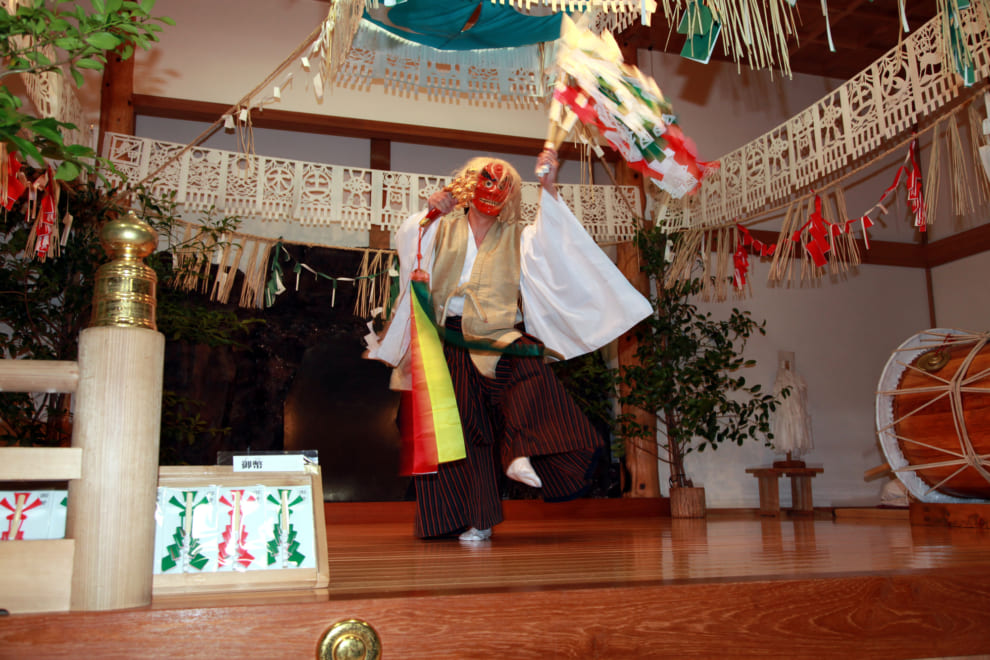The God who Guided the Heavenly Grandchild – Sarutahiko
Exploring the Kojiki
Updated on Nov 12 2019
When descending to the Earth with other deities, Hononinigi, grandson of Amaterasu, was met by an unusual god who lit the heavens and the Earth at a crossroads. Amenouzume asked who he was, and he replied, “I am Sarutahiko. I am here to guide the descendants of Amaterasu.” Thanks to Sarutahiko’s guidance, the many deities were able to descend to the Earth. Sarutahiko, guide of the gods, can be seen as a god of guidance and travel.

Sarutahiko has a bizarre appearance. (Takachiho Shrine)
An Unusual-looking Guardian God who Despises Evil
Sarutahiko is described in the Nihon Shoki as having a very long nose, being extremely tall, having a red mouth and rear, and eyes that shine like mirrors. This bizarre appearance is said to have influenced the notion of what tengu look like. Tengu have long been said to live in the mountains, and are generally thought of as having red faces, long noses, holding fans or staves, and being able to fly through the air. During shrine festivals, the faces of tengu can be seen leading the mikoshi (portable shrine) procession. People wearing tengu masks taking the lead are meant to represent Sarutahiko guiding the god in the mikoshi.
Sarutahiko, who stood at the crossroads between heaven and Earth, is both a god of travel as well as a guardian of boundaries. It may have been believed that in order to prevent “evils” such as disease and bad people from entering a village there was a need for someone with large, shining eyes and an enormous body to stand guard. Sarutahiko’s unusual appearance not only helps him to be a guide, but also to overcome opposition and prevent “evil” from approaching.
Does the Saru in Sarutahiko Mean Monkey?
The name “Sarutahiko” is said to be related to the word for monkey, saru. Like a monkey, Sarutahiko has a red mouth and rear. There are gods from other cultures that also have the appearance of a monkey. Indian myth features the god Hanuman, who served as the model for Sun Wukong (Son Goku). Tales of how Hanuman flies through the air and defeats evil people with his great strength are very popular throughout Asia. Sun Wukong is famous for travelling with Tang Sanzang (Sanzo Hoshi) to India in order to bring back the Buddhist scriptures. Their group overcame many dangers and succeeded in bringing them back to China. In the folktale Momo-taro, a monkey accompanies the hero on his quest to rid the land of ogres. Monkeys are similar to humans, but have been thought of from old as having strange powers not possessed by humans. Such powers may have been thought of as necessary for a journey to unknown lands.
-Kokugakuin University has been selected “as a place for the promotion of the study of the Kojiki” by the private university branding project of the Ministry of Education in 2016.-

published in The Japan News on 26/8/2019
Kikuko HIRAFUJI
Research
Mythology, Religious Study, History of Religion
Papers
Deities in the interwar period(2023/09/08)
Translation Issues in Kojiki: God, Deity, or Spirit?(2016/01/01)

